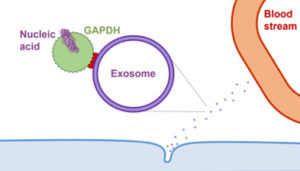Engineering the exosomal surface with modified GAPDH protein for targeted nucleic acid delivery

Applications: Gene therapy, targeted drug delivery
Exosome surfaces naturally have Glyceraldehyde 3-phosphate dehydrogenase (GAPDH) protein binding sites. Engineered GAPDH can be used to aid the binding of nucleic acids to an exosome, resulting in their targeted delivery to cells and tissues around the body.
| Features | Benefits |
|
|
|
|
|
|
|
|
|
|
|
|
Patented & available for:
- Licensing
- Co-development
- Consulting
about this technology
© Oxford University Innovation

